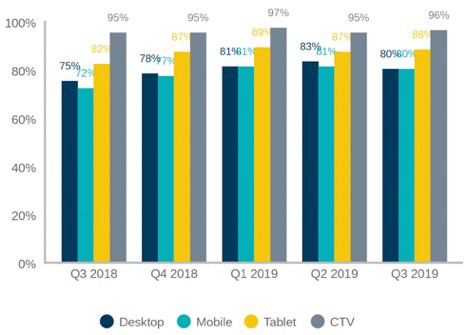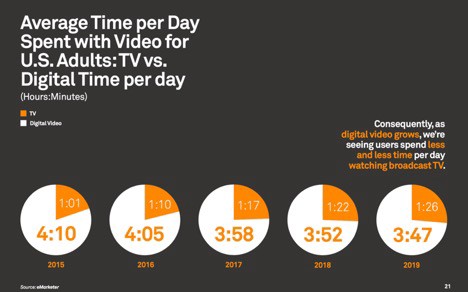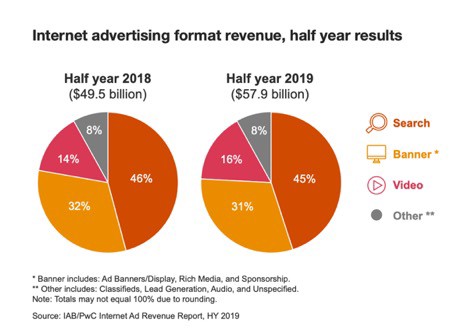“Instead of worrying about what you cannot control, shift your energy to what you can create.” — Roy Bennett
While unfortunate, Google’s announcement that they will excessively limit political advertising should not disrupt how political digital operates in any meaningful way. The objective has always been to find a target audience whenever and wherever they are — programmatic buying coupled with device ID targeting allows us to achieve this.
At WPA Intelligence we have never relied exclusively on Google’s ad inventory in order to ensure we are reaching our target audiences. Google does not have the monopoly of digital inventory, and certainly is no longer the best platform nor does it provide the best viewability — putting ad budget on google just because it’s google is like putting your eggs in one basket, you must diversify, especially to expand your reach and frequency.
Our Director of Digital Strategy, Hilary Resta, works with many different demand-side platforms simultaneously in order to maximize our ability reach audiences where their eyeballs are — any campaign must be platform agnostic. Google has always represented just a small piece of what we included in our targeting plans, since one can reach targets more efficiently through other DSP’s.
In fact, with the emergence of Connected TV (CTV) and Over-The-Top (OTT), and an ever expanding network pre-roll inventory, coupled with industry demand for better viewability of ads, it has been more efficient to reach targets through non-google platforms for some time.
Furthermore, Google has never been particularly “friendly” to the use of first party data for targeting (which is what we provide and work from). They’ve always maintained their affinity audiences were just as good as first party data — while other DSPs have put resources behind improving matching capabilities for first party data from firms like WPAi and others.
For example on the Abbott for Governor 2018 campaign (which was likely the largest digital effort of any campaign last cycle), we certainly weren’t going to trust Google targeting over our own, which meant we seldom used Google as part of our media plan for persuasion and mobilization efforts.
Therefore, moving forward all campaigns (political, advocacy and even corporate) must be more creative about digital buys, not just accepting affinity targets or lazily throwing the largest portion of a digital budget on Google.
With more options than ever for video advertising, with expansive and diverse set of networks for both addressable digital video and OTT relying on just one ad network and DSP — Google or, for that matter, anything else — is inefficient for reach and ad budget.
For example, the average completion rate for CTV ads has remained steady at 95% for the past three consecutive quarters — almost 9 times out of 10, ads are played in their entirety. We know videos are the most compelling form of advertisement, and having high completion rates means greater impact.

Employing a cross-channel video advertising strategy helps us find the best placements to reach target audiences across all relevant forms of video: traditional TV, addressable linear, streaming (e.g., OTT and CTV), and online video.
No one platform has the placement or inventory across all these video forms, highlighting the need for a holistic approach digital advertising.
As video viewership becomes increasingly fractured, CTV and OTT are bridging the gap between digital and linear TV. Allowing for more data-driven targeting to efficiently reach audiences on every screen while also extending your linear footprint.

2019 has seen tremendous growth in digital video stealing percentages of banner and search ad revenue. Digital video now makes up 16.4% of total internet advertising revenue, up from 14.2% 2018.

A data-driven strategy for digital advertising allows for effective targeting, unique messaging, and efficient budget allocation — critical for success.
The more a voter believes your candidate cares about the issues she cares about the more likely she is to engage, and ultimately vote for you.
Viewership fragmentation and an individuals expectation of content make it clear that digital must be a significant and growing aspect of all outreach and marketing efforts.
The reality is that media habits and technology are changing so fast that no one knows what works today or more importantly what will work tomorrow. And Google’s policy change may end up being a blessing in disguise.
